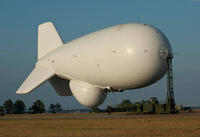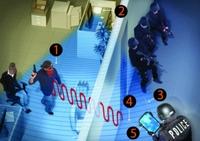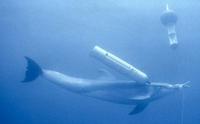-
First class of U.S. Army soldiers completed training with Raytheon's JLENS

JLENS uses a powerful integrated radar system to detect, track, and target a variety of threats, allowing military units to defend against threats, including hostile cruise missiles, low-flying manned and unmanned aircraft, large caliber rockets, and moving surface vehicles such as boats, SCUD-launchers, automobiles, and tanks
-
-
Silent Falcon solar electric unmanned aerial system unveiled
Silent Falcon UAS Technologies last week unveiled the much anticipated Silent Falcon solar electric unmanned aerial system (UAS) at the Association for Unmanned Vehicle Systems International (AUVSI) conference in Las Vegas
-
-
U.K. Ministry of Defense seeking IED sensors of the future
The U.K. Ministry of Defense (MoD) scientists are soliciting ideas from U.K. industry and academia to showcase their innovative ideas for detecting improvised explosive devices (IEDs); in particular, MoD is looking for sensors that can detect concealed IEDs, either worn by a person or hidden in a vehicle, buried by or in the roadside or hidden in a wall, box, bag, or another container
-
-
U.K. to help IRAQ destroy legacy chemical weapons

U.K. scientists will provide training which will support the Iraqi government’s efforts to dispose of remnants of the chemical weapons amassed during Saddam Hussein’s regime
-
-
Seeing through walls with the help of laser systems
Inspired by the erratic behavior of photons zooming around and bouncing off objects and walls inside a room, researchers combined these bouncing photons with advanced optics to enable them to “see” what is hidden around the corner
-
-
UAVs with dexterous arms to help in infrastructure repair and disaster recovery
With current technology, most UAVs perform passive tasks such as surveillance and reconnaissance missions, tasks which are performed well above ground; researchers are interested in how UAVs might interact with objects at or near ground level; a UAV with dexterous arms could perform a wide range of active near-ground missions, from infrastructure repair and disaster recovery to border inspection and agricultural handling
-
-
Seeing through walls, clearly

Research and tests show, for the first time, the ability to use t passive WiFi radar for through-the-wall (TTW) detection of moving personnel – and do so covertly
-
-
Improving landmine detection – and air travel safety

It is estimated that there are about 110 million active landmines lurking underground in sixty-four countries across the globe; each year as many as 25,000 people, most of them civilians, are maimed or killed by landmines; the mines not only kill and maim, they can paralyze communities by limiting the use of land for farming and roads for trade; researchers offer a better way to detect landmines – a method which can also be used in airports to help thwart possible terrorist threats
-
-
U.S. losing patience with Pakistan over Haqqani network’s growing boldness

Last week the Pakistan government-supported Haqqani network released a video of a 1 June operation, showing members of the group driving an explosive-laden truck into Camp Salerno, an American military base in Afghanistan, near the Pakistani border; the truck exploded, opening a breach in the camp’s fence, through which Haqqani militants entered the camp, shooting in all directions; only two GIs died in the attack — but it could have been far worse, as hundreds of American soldiers were in the mess hall only yards away; Congress has already voted to designate the Haqqanis as a Foreign Terrorist Organization (FTO), and administration officials say that the United States is “one major attack” away from unilateral action against Pakistan
-
-
DARPA demonstrates quick vaccine development for hypothetical pandemic

A World Health Organization (WHO) estimates that between 20 and 50 percent of the world’s population will be affected if a pandemic were to emerge; WHO forecasts “it may be six to nine months before a vaccine for a pandemic virus strain becomes available”; DARPA reports that rapid fire test of novel, plant-based production method delivers more than ten million doses of H1N1 VLP influenza vaccine candidate in one month
-
-
BAE Systems' defense technology to help Team GB win Olympic medals
Scientists and engineers from BAE Systems have been applying defense and security technology to help the British Modern Pentathlon team to evaluate their high-tech laser pistols, which were introduced at the beginning of the 2011 season, replacing traditional air pistols
-
-
A device used to measure nuclear weapons effects is now used for rocket propulsion system
Can a device formerly used to test nuclear weapons effects find a new life in rocket propulsion research? That is the question in which researchers seek an answer; when assembled, the device will tip the scales at nearly fifty tons, and will be “one of the largest, most powerful pulse power systems in the academic world,” according to one researcher
-
-
Researchers say spoofed GPS signals can be countered
From cars to commercial airplanes to military drones, global positioning system (GPS) technology is everywhere — and researchers have known for years that it can be hacked, or as they call it, “spoofed”; the best defense, they say, is to create countermeasures that unscrupulous GPS spoofers can not deceive
-
-
Milestone for a Raytheon bomb which acquires, tracks, and then hits moving targets
Raytheon said its Small Diameter Bomb II (SDB II) program achieved a milestone when it successfully engaged and hit a moving target during a flight test at the White Sands Missile Range, New Mexico; the bomb, released from an F-15E, acquired, tracked, and guided to a moving target using its tri-mode seeker, scoring a direct hit
-
-
Using dolphins’ signal processing method for sea-mine detection

One way for Iran to close the Straits of Hormuz to shipping is to place thousands of sea mines in the water; research examine how dolphins process their sonar signals, using the findings to provide a new system for man-made sonar to detect targets, such as sea mines, in bubbly water
-
More headlines
The long view
Tantalizing Method to Study Cyberdeterrence
Tantalus is unlike most war games because it is experimental instead of experiential — the immersive game differs by overlapping scientific rigor and quantitative assessment methods with the experimental sciences, and experimental war gaming provides insightful data for real-world cyberattacks.
Testing Cutting-Edge Counter-Drone Technology
Drones have many positive applications, bad actors can use them for nefarious purposes. Two recent field demonstrations brought government, academia, and industry together to evaluate innovative counter-unmanned aircraft systems.
European Arms Imports Nearly Double, U.S. and French Exports Rise, and Russian Exports Fall Sharply
States in Europe almost doubled their imports of major arms (+94 per cent) between 2014–18 and 2019–23. The United States increased its arms exports by 17 per cent between 2014–18 and 2019–23, while Russia’s arms exports halved. Russia was for the first time the third largest arms exporter, falling just behind France.
How Climate Change Will Affect Conflict and U.S. Military Operations
“People talk about climate change as a threat multiplier,” said Karen Sudkamp, an associate director of the Infrastructure, Immigration, and Security Operations Program within the RAND Homeland Security Research Division. “But at what point do we need to start talking about the threat multiplier actually becoming a significant threat all its own?”
The Tech Apocalypse Panic is Driven by AI Boosters, Military Tacticians, and Movies
From popular films like a War Games or The Terminator to a U.S. State Department-commissioned report on the security risk of weaponized AI, there has been a tremendous amount of hand wringing and nervousness about how so-called artificial intelligence might end up destroying the world. There is one easy way to avoid a lot of this and prevent a self-inflicted doomsday: don’t give computers the capability to launch devastating weapons.
